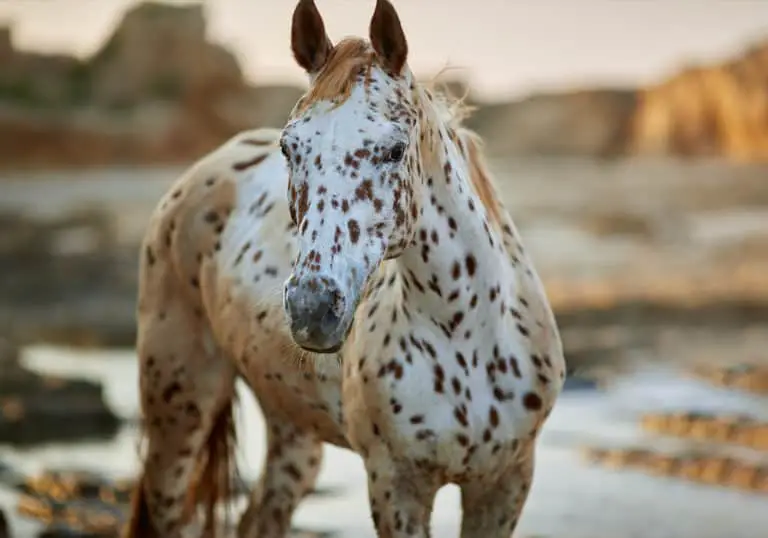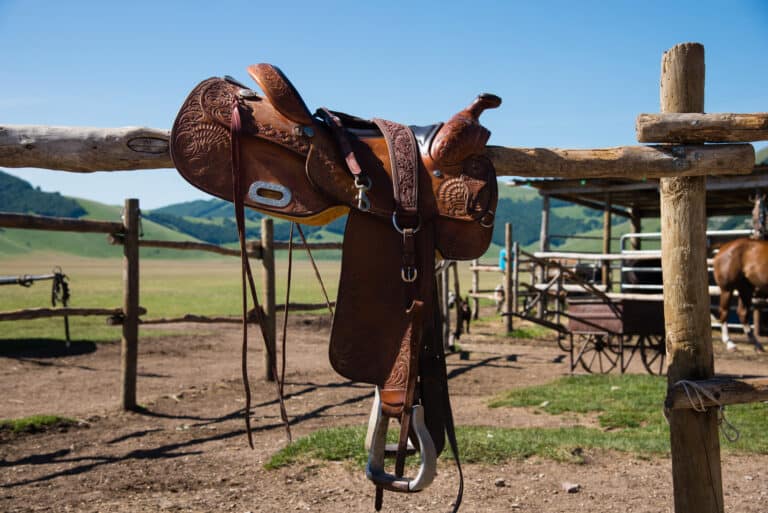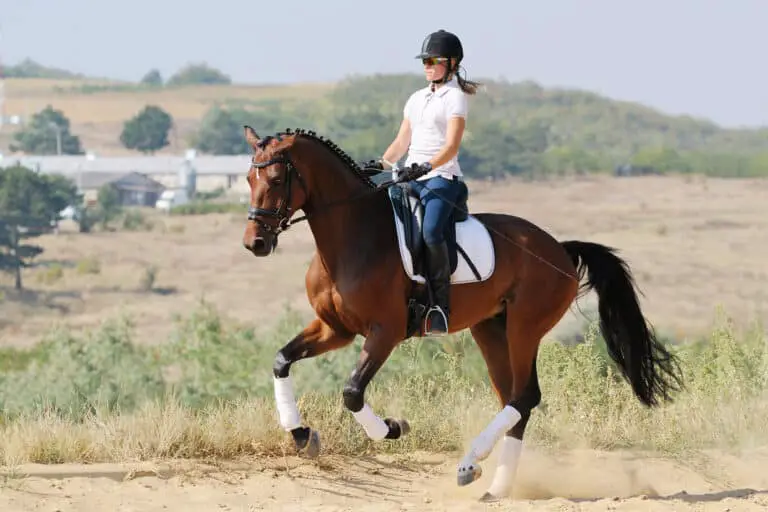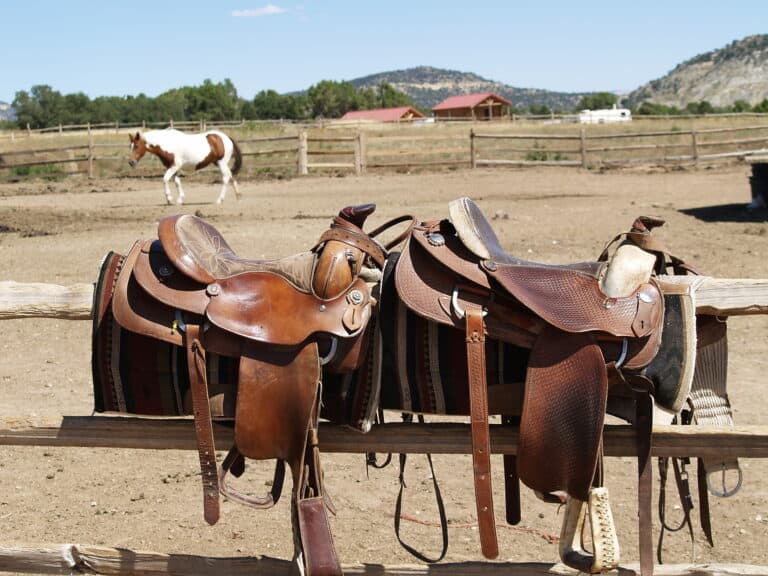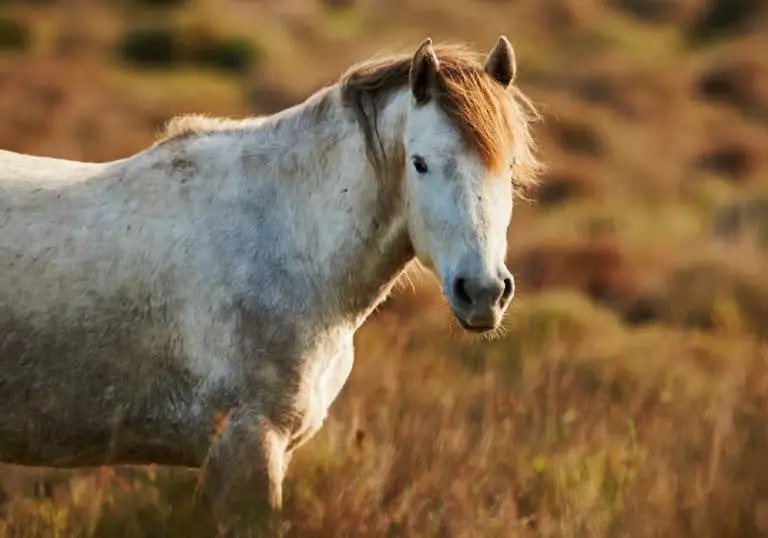Breton Horse Breed: Care, Cost & History (2025)
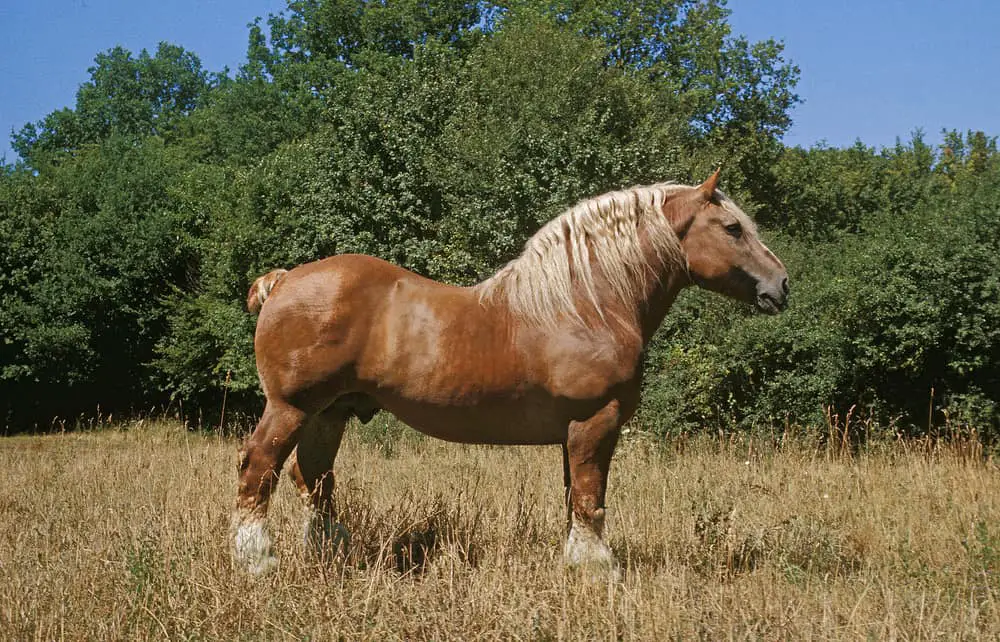
The Breton horse originated in the Brittany province of northwest France for draft work and was raised for meat. There are three distinct sub-types of the breed that developed for different uses in various sections of the province. They are the most popular draft breed in France and have maintained their smaller size but still have incredible strength.
Breed: Breton horse
Adult Weight: 1,250-1,700 pounds
Adult Height: 15-16 hands (60-64 inches)
Origin: France
Use: Draught, farm work, meat
Colors: Chestnut, flaxen chestnut, red roan, bay
Features: Large, muscular size, short legs with feathers
Lifespan: 25 years
Character: Gentle, friendly towards people, calm
Gait: Energetic and smooth
Best for: All levels of riders
- Characteristics
- Breton Horse Care
- Breton Horse History
- Modern Bretons
- Cost and Ownership
- Buying a Breton
- Similar Breeds
Breton Horse Characteristics
There are some distinguishing characteristics in the breed. The Breton horse head has large, lively eyes. The eyes are also intelligent and kind. The nostrils are also wide, as is the forehead.
Most horses have a flat profile, with some members of the breed having a dished face. Their ears are small and shapely.
Other Breton horse characteristics include their short, but a strong neck that connects into their withers and down to the long shoulder. Their back is short, wide, and strong and ties into their round ribcage. They have a double croup, and short muscular legs on large, sound hooves.
Size
Breton size is small for a draft breed. Unlike other breeds, they didn’t outcross to create larger horses and instead focused on maintaining their breed.
Each of the three sub-types has a different average Breton horse height. Overall, the adult Breton horse is 15-16 hands tall or 60 to 64 inches. Some Breton horses are 14.3 hands, and heavier horses are up to 16.2 hands. (1)
The tallest horses, the Heavy Draft Breton, are still used for draft work. The Postier Breton was originally used for delivering mail and pulling coaches, and still used for light draft work, these average 15.1 hands. The Corlay Breton is the smallest and used for light draft and saddle work.
Weight
Breton horse weight varies with their size and breed sub-type and is from 1,250 to 1,700 pounds. Again, the Corlay Breton weighs the least on this scale, with the Heavy Draft Breton at the higher end of the range.
Breton horses are heavy considering their height. They are considered compact horses and have a large, dense bone structure, that supports their weight. Horses are incredibly strong because of their weight, and that increased their popularity in draft work.
A Breton foal is born with their height and weight proportionate to their parents, and most growth occurs in their first three years. They are at their adult height and weight by age five.
Colors
Common Breton horse colors are chestnut, flaxen chestnuts with a white mane and tail, red roan, and bay. Among these, chestnut and chestnut with a flaxen mane and tail are the most commonly seen among all breed types.
Rare Breton horse colors are black and to a lesser degree blue roan. Blue roan is an even pattern of black and white hairs that make the horse appear blue. Genetics and breeder preference contributed to these colors being rare.
All colors of the beautiful Breton horse can have white markings. This is usually a star or blaze on the face and white socks below the knees and hocks.
Temperament
Kind, gentle, calm, and easygoing are common ways the Breton horse temperament is described. Early breeders, and those today, wanted a horse that would do farm work without getting excited or spooking and be gentle enough for their children to handle.
The original uses were agricultural work, pulling carriages, and delivering mail. Their kind temperament means they’re still used for agricultural work and tourism. The Breton horse behavior has made them the ideal horse for pleasure driving and recreation, in addition to their traditional uses.
The Breton horse uses the general rules of the United States Equestrian Federation, therefore, children are not allowed to exhibit stallions. (2)
Breton Horse Care
The Breton horse breed is known as easy keepers. They require relatively little care beyond the basic standards to thrive. Care must be taken not to overfeed these horses and to provide adequate exercise. The average Breton horse lifespan is 25 years, and they are useful horses into their twenties.
Diet and Nutrition
The basis of the Breton diet is water and forage. Hay and grass are the forage sources. They should have a minimum of two forage feedings per day, and constant access to fresh, clean water. It’s important to have hay tested to understand if the nutritional requirements of the horse are being met. (3)
The Breton breed is easy keepers, and most need little to no grain to maintain their weight and energy. However, some supplements or grains may be required to meet their vitamin and mineral requirements. Horses in heavy work have increased diet needs. An equine nutritionist or veterinarian can help determine diet and nutrition. (3)
Health Problems
There are a few common health problems that owners should be aware of. Scratches, or an infection on the pasterns, can affect Breton horses because the feathers on their legs create an environment where bacteria and fungi grow. Proper grooming can prevent scratches.
Some also suffer from shivers, where the muscles jerk and shake; massage is the only thing that seems to help. (4)
The Breton’s genetic problems are limited, although serious in affected horses. Draft breeds, including Bretons, are susceptible to Equine Polysaccharide Storage Myopathy (EPSM).
Horses with EPSM can’t metabolize starch and sugar; they end up wasting away and many die. Draft horses and geldings suffer the most. (5)
Grooming
Grooming is a way to bond with a horse while keeping them happy and healthy. Breton grooming is important before and after the horse works. It should also be completed daily for the engagement with their owner and for health reasons. (6) Breton grooming is one of the best ways to prevent the painful scratches health problem. (4)
Bretons are people-oriented horses and enjoy being groomed. The same tools, a curry comb, mane and tail brush, stiff brush, soft brush, and finishing towel, used on other breeds are used with Bretons. Hooves should also be cleaned daily to prevent health problems and ensure horses stay sound. (6)
Breton Horse History
Horse breeding in Brittany, the northwest province in France where the Breton developed, dates back to the Middle Ages. This is a tough environment, and horses that developed here are strong and durable – they had to be to survive. Military leaders used Breton horses during the Middle Ages, and Breton horse history has evolved since then.
Origin
Although Breton horse origin dates back to the Middle Ages, the horses were crossed with many other breeds to strengthen and further refine the Breton throughout history.
Many were native horses, but the Breton was also crossed with the Canadian horse, Arabians, Thoroughbreds, Hackney, and the Norfolk trotter.
These crosses helped form the three distinct sub-types of the Breton breed. The Corlay Breton is closest to the horse of the Middle Ages and resulted when horses were crossed with Arabians and Thoroughbreds.
The Postier Breton benefitted from the Hackney and Norfolk Trotter crosses. Finally, the Heavy Draft Breton was bred on the northern coast and crossed with Ardennes and Percheron horses.
Historic Development
The three regions in Brittany were different and that’s why different breeds were selected to cross with the Breton.
The Corlay horse developed in the Central Mountain Region of Brittany, this is challenging terrain. Corlay is the smallest of the three sub-types and the smaller size helped them.
Postier Bretons pulled coaches and delivered mail. They were developed in central Brittany, with more towns, and used for a lighter, fancier horse. The heavy work of the northern coast necessitated stronger horses and that’s why Ardennes and Percherons were used in the 1800s.
Today, some only recognize two types of Breton horses, the Sommier – or Heavy Draft Breton, and the Roussin, which was the Corlay.
Notable Breton Horses
Many famous Breton horses made their mark on history, but it’s amazing how many of their names have been lost, despite their accomplishments.
The Breton horse pedigree is noted for its genetic diversity and was also used to create or improve horse breeds throughout the world. Their contributions started new breeds and improved on existing stock.
Ninon
Ninon was a mare with two sons with significant breed impacts. She was born in 1957, and her sons Var Vella, born in 1965, and Arguella, born in 1966, shaped the modern Breton horse. They have a combined 24 sons and 110 grandsons – all of these stallions. A Breton gelding from this line is very valuable.
Niree
Niree was a Breton stallion and son of Var Vella born in 1979. Even today, his effects on the breed are well recognized, as many Breton horse pedigrees trace back to him, and his grandmother, Ninon. His bloodlines were most influential in the 1990s because of his sons, including Ice Landi, Norgant, Riton, and Gouedic.
Antwerp
Antwerp was yet another Breton stallion that made a significant impact on the breed, and his bloodlines are also still found in many of today’s Breton horses. He was born in 1988 and is best known for the daughters that he produced. Three of his sons – Glomel, Gabarit, and Jackson – did make significant breed contributions too.
Myths and Legends
Breton horse legends tell us about horses with extreme strength and durability, those that went on to change the history of other horse breeds or help the people of France survive through hardships. Myths and legends surrounding the Breton date back to the Middle Ages because of the contributions the horses have made.
War Horses
The cavalry used Breton horses in the Hundred Years War. They were known as formidable horses and had a reputation for being tough to battle against. The Battle of Formigny was part of this and was fought in April 1450 between England and France. When the French cavalry showed up on their Breton horses, the British retreated rather than fight.
Survivors
The Bidet Breton was a horse bred in the era of Napoleon, the 1800s. Legend has it that these horses were gaited, and ambled instead of trotting. This made them extremely comfortable to ride. The Breton bloodlines also gave them incredible endurance. They were the only horses that survived when Napoleon and the French troops invaded Russia.
Unnamed Breton Stallion
The World Wars devastated horse populations in Europe. After World War II, a Breton stallion, whose name has been lost, was sent to Germany to improve the Schleswig Coldblood breed of horse. This is a medium-sized draft horse still found in northern Germany today. The Breton blood helped reinvigorate the breed.
Modern Breton Horses
Today, the modern Breton horses are a smaller breed organization in terms of numbers, but the effects of the breed are seen in horses from India to Japan, and Germany to Canada. The types of Breton horses in France include the Sommier and Roussin, as they are called, or Heavy Draft and Corlay.
Breeding
Breton breeding serves primary purposes today. First, horses are still bred for agricultural work and recreational purposes. Second, there is a large demand for horse meat in Europe and other continents, and Breton horses breeding is used for this.
The majority of Breton horse breeders associated with the breed organization are smaller, some only have one or two mares. These breeders carefully steward their beloved horse’s bloodlines though and continue making improvements.
The Sommier, or Heavy Draft Breton, is very popular along the coast for seaweed harvesting and other agricultural work. People in the mountainous regions still use their Roussin horses on the steep and narrow trails too.
Population
Each year, about 2,300 new Breton foals are registered with the association in France. (7) Unfortunately, this number is actually going down, and the Breton horse population has a threatened status, although not endangered yet.
The majority of the registered population today lives in France. Thousands of horses were exported from the 1940s to the 1970s to strengthen and create other breeds, and this certainly contributed to the lower number of registered horses.
There isn’t a large population in the United States, but the video game Red Dead Redemption 2 features Breton horses (that can be purchased in the game) and this may be a literal game-changer for the real-life breed population.
Uses
There are several primary Breton horse uses, including agricultural work, pleasure riding and driving, and meat production.
First, the agricultural work in France and other parts of the world is still done with horses in some instances. They are popular for seaweed harvesting because you can’t take a tractor that far out into the ocean. Others are using them in fields again because Breton horses are better for the environment.
People also enjoy using horses for recreational riding and driving. The Breton horse gait is light and energetic. Although the Bidet Breton is extinct, the famous ambling gait these horses had must have contributed some to the smoothness of today’s Bretons.
Breton Horse Prices
Exact figures for the Breton horse price are hard to determine. The horses are not readily available, and many breeders prefer not to disclose prices. Owning a Breton goes beyond the purchase price though, as a horse requires daily and routine care such as board, feed, and health care, which increases ownership costs.
Purchase Price
Purchasing a horse is a fun experience and a big decision. Selection depends on what your goals are for horse ownership, and the price is determined by the age of the horse, training, bloodlines, and supply and demand.
The price of Breton horse is between $1,100 to $2,200 for a young horse, although an adult animal with Breton horse training or notable bloodlines will easily cost more. (8) This is the average price within France too, and those looking for a Breton horse in another part of the world will also have a higher purchase price because fewer horses are available.
Ownership Costs
The initial Breton price is purchasing them, but the costs keep accruing every year. Expect the Breton horse cost of ownership to be between $1,770 and $12,930 each year that you own the horse. This covers the board, feed, veterinary care, and hoof care the horse needs each year.
Board
Board is one of the most important things a horse owner pays for. It’s shelter and turnout space or a pasture for your horse. Breton horse board cost will vary depending on the amenities at the facility but expect to pay anywhere from $1,200 to $7,200 for it each year. (9)
Feed
Horses need fresh, clean water, and they also need feed. This is your horse’s grocery bill. Forage or hay will be the biggest percentage of this annual cost, then you also need grain and supplements, depending on diet and nutrition needs. Breton horse feed cost is between $250 to $4,380 annually. (9)
Veterinary Care
Veterinary care is essential to prevent diseases and health issues your horse shouldn’t have to suffer through. Your Breton horse veterinary cost is $250 to $350 each year for vaccinations, dental care, and deworming. All these keep horses healthy and happy. Any accidents or injuries will cost more for that particular year. (9)
Hoof Care
Horses’ hooves grow non-stop and also withstand a lot of pressure, both holding the horse up, and hitting the ground as the horse moves. Breton horse hoof care cost is $250 to $4,380 annually, and this includes having the farrier trim the horse’s hooves every six to eight weeks and putting shoes on the horse if needed. (9)
Buying a Breton Horse
Buying a horse is fun, but nerve-wracking. Doing your homework before you buy a horse will help reduce any nerves and ensure you make the right decision.
The Breton breed has outstanding qualities, including their kind temperament. List your goals for owning a horse, and find several horses to meet before making your decision.
Is the Breton Horse Right for You?
The two sub-types mean that owning a Breton is the right choice for many prospective horse owners.
Both sub-types have kind and gentle personalities, are sure-footed, and durable horses. Even beginners can be successful with a Breton because of their temperament.
Those that want to ride or drive their horse can enjoy the breed. Riding a Breton horse is fun because of their smooth and energetic gait, and they want to please people, so are willing to try whatever riding challenge you have in mind.
They are also fantastic driving horses. Of course, the breed is willing to complete agricultural work as well and does so with little fanfare.
How to Buy a Breton Horse?
Buying a Breton horse can be tricky if you aren’t in France, as this is where most of the available horses are. It’s best to start by contacting a Breton breeder to learn more about the current bloodlines and horse families.
Doing your homework and identifying what you want in a horse before you contact the breeder will make the conversation easier. The breeder will help you look for a horse that meets these requirements.
Look at several horses that fit your requirements, as no horse is perfect. They also have unique personalities, and we get along better with some horses than others, just like with people. Avoid unfriendly horses as this is a key breed characteristic.
Similar Breeds to Breton
It can be challenging to find a Breton horse. There are several Breton breed alternatives that are similar in personality and usefulness. The Percheron and Ardennes were both used to improve the Breton horse and these draft breeds are strong and intelligent. The Italian Heavy Draft looks like the Breton horse, one of its ancestors.
Percheron
The Percheron is another draft breed that developed in France, although they are from the western part of the country. Percherons are more readily available throughout the world, especially in the United States. Percherons were used to improve the Breton horse and are also highly intelligent and willing workers. They’re known for their gray or black color too.
Ardennes
The Ardennes is one of the oldest draft breeds and originated in the Ardennais region of France, Belgium, and Luxembourg. They are very heavy-boned and incredibly strong and durable, used as war horses in the beginning. They were also used to improve the Breton breed. Their history dates back to ancient Rome, and Julius Caesar wrote about them.
Italian Heavy Draft
The Italian Heavy Draft was created using Breton horse blood, among others. These predominantly chestnut horses are strong and fast, in a compact body that is 14.2 to 15.3 hands. Visually, they are the closest match to the Breton breed. They are primarily used for meat production, but light agricultural work, riding, and driving are also popular.
FAQ
What is a Breton horse?
The Breton horse is a draft breed from France that is used for agricultural work, including harvesting seaweed and being raised for meat in the past.
What does a Breton horse look like?
There are three body types within the Breton horse breed. All are large, muscular horses and most are chestnuts or flaxen chestnuts.
How did the Breton horse get its name?
The Breton horse is named for the Bretagne province in northwest France where it originated, also called Brittany.
Can you ride a Breton horse?
Yes, you can ride a Breton horse and many people use them as saddle horses.
Are Breton horses good for beginners?
Breton horses are good for beginners because they have a gentle and calm personalities and enjoy people.
How tall is a Breton horse?
The Breton horse is 15 to 16 hands tall, or 60 to 64 inches.
How much does a Breton horse weigh?
Breton horses weigh between 1,250 and 1,700 pounds.
How big is a Breton horse?
Breton horses are larger than your average horse, but small for a draft breed. However, they are incredibly strong.
How much does a Breton horse cost?
The cost for a Breton horse varies, but the average is from $1,100 to $2,200.
How much does a Breton horse ownership cost?
Owning a Breton horse costs between $1,770 and $12,930 each year.
How long do Breton horses live?
Breton horses live for an average of 25 years.
How fast can a Breton horse run?
A Breton horse can run about 20 miles per hour.
How much can a Breton horse pull?
Breton horses can pull between 1,875 and 2,550 pounds.
How much can a Breton horse carry?
A Breton horse can carry between 250 and 340 pounds.
At what age is a Breton horse full grown?
Breton horses are usually full-grown at age five.
What are Breton horses used for?
Breton horses are used for draft work, including on farms and harvesting seaweed, pleasure riding and driving, and raised for meat.
References
- The International Museum of The Horse. 2022. Breton. Link
- United States Equestrian Federation. 2022. Licensed Competitions. Link
- Merck Veterinary Manual. 2021.Nutritional Requirements of Horses and Other Equids. Link
- The Horse. 2004. Heavy Horse Health Problems. Link
- Timothy Galusha, Christine Hanika, DVM, PhD. 2000. Equine Polysaccharide Storage Myopathy. Link
- United States Equestrian Federation. 2022. Basic Horse Grooming. Link
- L’Energie Cheval. 2022. Breton Draft. Link
- Le Cheval Breton. 2022. Link
- Arabian Horse Association. 2022. What is the Cost of Providing for Them? Link

